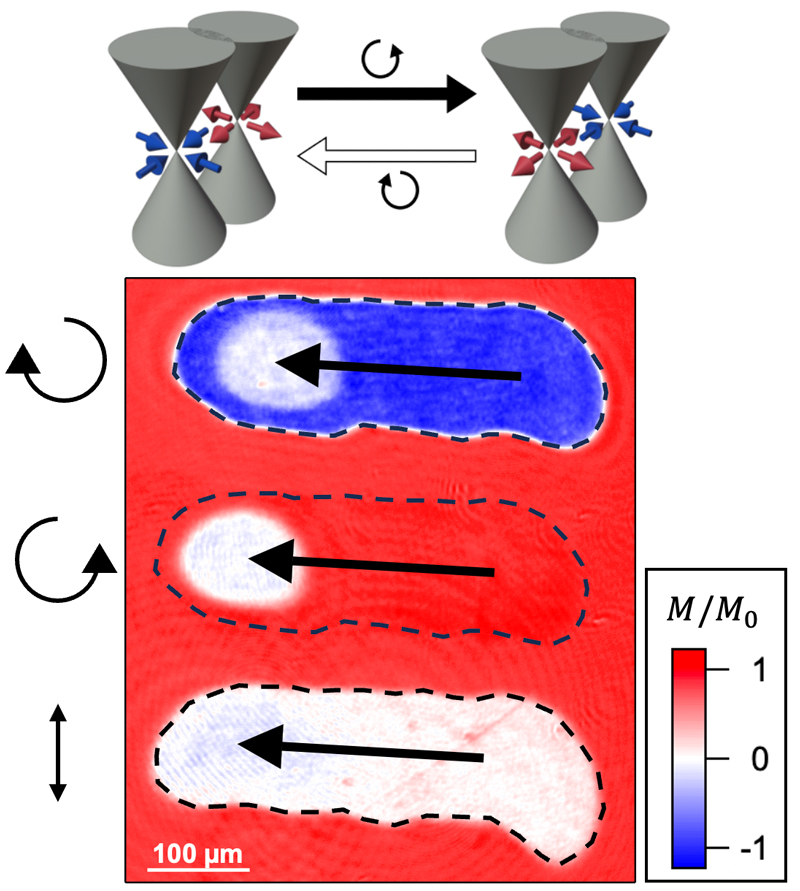Disclaimer: machine translated by DeepL which may contain errors.
~ Message from a graduate student~.
Controlling Matter with 10-13 Seconds of Light
 |
| Kazuma Ogawa |
| Department of Physics 1st Year Doctoral Student |
| Birthplace Kanagawa, Japan |
| High School Katayama Gakuen High School |
| Faculty The University of Tokyo Faculty of Science |
Can we control matter at ultrafast speeds using light that lasts only 1/10 trillion of a second? I became interested in the field of photophysics because I found the world in which light is used in pursuit of such high speed fascinating. In the field of photophysics, a technique called "pump-probe" is frequently used, which means to excite (pump) a material by irradiating it with light and to observe (probe) its state with another light. The light used is an optical pulse emitted from a laser with a duration as short as 100 fs (10-13 s). In other words, the pump-probe method is an excellent technique to drive a material with invisible, instantaneous light and measure changes on that timescale. I am still impressed by this technique to control/observe physical properties by simply shining light remotely without touching the material.
My research is on magnetic Weil semimetals. Weil semimetals exhibit unique electromagnetic responses that differ from those of ordinary metals and semiconductors due to their special electronic states. Among them, magnetic Weil semimetals are Weil semimetals that possess some kind of magnetic order like a magnet, and often exhibit a special interaction between magnetization and electromagnetic response. For example, when a current is applied to a ferromagnetic material such as a permanent magnet in a direction perpendicular to the magnetization, an electric field is generated perpendicular to the current and the magnetization. This is called the anomalous Hall effect and is well known in condensed matter physics. In magnetic Weyl semimetals, this anomalous Hall effect tends to be an order of magnitude larger than in magnetic Weyl semimetals due to their special electronic states. The magnetic Weyl semimetal Co3Sn2S2, which I am using in my research, has also been reported to have one of the largest anomalous Hall effects in matter. In recent years, there has been much interest in the application of such materials to power-saving devices and quantum computers, and much research has been conducted to control their special physical properties.
 Schematic of controlling the electronic state of magnetic Weyl semimetals by light irradiation (top) and magneto-optical image showing that the magnetization of a Co3Sn2S2 thin film is controlled by the polarization of the irradiating light (bottom), based on data from N. Yoshikawa, K. Ogawa et al. 2022).
Schematic of controlling the electronic state of magnetic Weyl semimetals by light irradiation (top) and magneto-optical image showing that the magnetization of a Co3Sn2S2 thin film is controlled by the polarization of the irradiating light (bottom), based on data from N. Yoshikawa, K. Ogawa et al. 2022).
In my study, I aimed to optically control thin films of the magnetic Weyl semimetal Co3Sn2S2 using ultrashort pulses of circularly polarized light in the mid-infrared region, which is invisible to the naked eye. In linearly polarized light, the electric field oscillates in one direction perpendicular to the direction of light propagation and propagates as an electromagnetic wave, while circularly polarized light is light in which the direction of oscillation of the electric field rotates at a constant speed in a plane perpendicular to the direction of light propagation. Co3Sn2S2 thin film is a ferromagnetic material with a perpendicular magnetization, and magneto-optical imaging has revealed that irradiation of mid-infrared light can control the magnetization of the irradiated region in accordance with the polarization (Fig. 1). This was found through magneto-optical imaging (Figure). This is the first experimental example of nonvolatile control of the magnetization of a magnetic Weyl semimetal by light alone, which means that the unique electrical or magnetic properties of its special electronic state can be controlled by light. Currently, we are applying this optical technology to investigate the unique properties of magnetic Weyl semimetals. The study of condensed matter physics using such ultrafast light will lead to a better understanding of the natural science around us and to applications such as devices.


